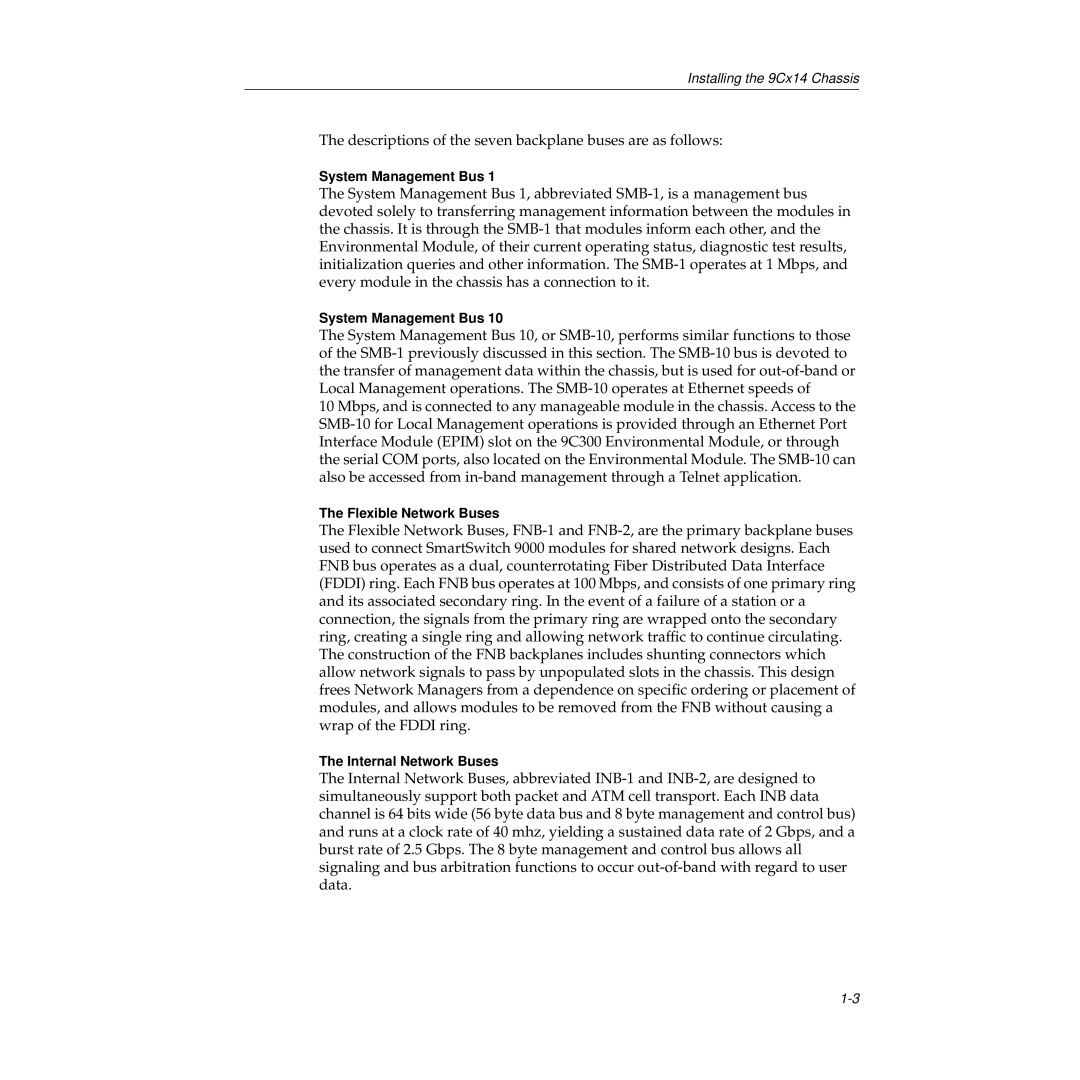Installing the 9Cx14 Chassis
The descriptions of the seven backplane buses are as follows:
System Management Bus 1
The System Management Bus 1, abbreviated SMB-1, is a management bus devoted solely to transferring management information between the modules in the chassis. It is through the SMB-1 that modules inform each other, and the Environmental Module, of their current operating status, diagnostic test results, initialization queries and other information. The SMB-1 operates at 1 Mbps, and every module in the chassis has a connection to it.
System Management Bus 10
The System Management Bus 10, or SMB-10, performs similar functions to those of the SMB-1 previously discussed in this section. The SMB-10 bus is devoted to the transfer of management data within the chassis, but is used for out-of-band or Local Management operations. The SMB-10 operates at Ethernet speeds of
10 Mbps, and is connected to any manageable module in the chassis. Access to the SMB-10 for Local Management operations is provided through an Ethernet Port Interface Module (EPIM) slot on the 9C300 Environmental Module, or through the serial COM ports, also located on the Environmental Module. The SMB-10 can also be accessed from in-band management through a Telnet application.
The Flexible Network Buses
The Flexible Network Buses, FNB-1 and FNB-2, are the primary backplane buses used to connect SmartSwitch 9000 modules for shared network designs. Each FNB bus operates as a dual, counterrotating Fiber Distributed Data Interface (FDDI) ring. Each FNB bus operates at 100 Mbps, and consists of one primary ring and its associated secondary ring. In the event of a failure of a station or a connection, the signals from the primary ring are wrapped onto the secondary ring, creating a single ring and allowing network traffic to continue circulating. The construction of the FNB backplanes includes shunting connectors which allow network signals to pass by unpopulated slots in the chassis. This design frees Network Managers from a dependence on specific ordering or placement of modules, and allows modules to be removed from the FNB without causing a wrap of the FDDI ring.
The Internal Network Buses
The Internal Network Buses, abbreviated INB-1 and INB-2, are designed to simultaneously support both packet and ATM cell transport. Each INB data channel is 64 bits wide (56 byte data bus and 8 byte management and control bus) and runs at a clock rate of 40 mhz, yielding a sustained data rate of 2 Gbps, and a burst rate of 2.5 Gbps. The 8 byte management and control bus allows all signaling and bus arbitration functions to occur out-of-band with regard to user data.
